Enquiries
What are Enquiries?
Enquiries are a suite of reports that allow real time reports to be produced from within the iplicit application.
There are more than 500 pre-built Enquiries that produce standard reports across a wide range of data.
There is also an ability to create custom reports that can be either based on an existing Enquiry or completely new in structure.
The Enquiries are grouped by type (e.g. Assets, Debt, etc) and these can be browsed from the group column or searched by name using the search filter.
Note
Enquiries will have a limit to the number of rows returned.
When the maximum row value is breached, a banner will be displayed at the top of the finder menu showing the number of rows returned.

It will also have a Learn more link to Limits and filtering, giving advice on how to reduce the number of rows returned.
How do you view Enquiries?
View Enquiries
Select Analytics / Enquiries from the Main section of the pulse menu -
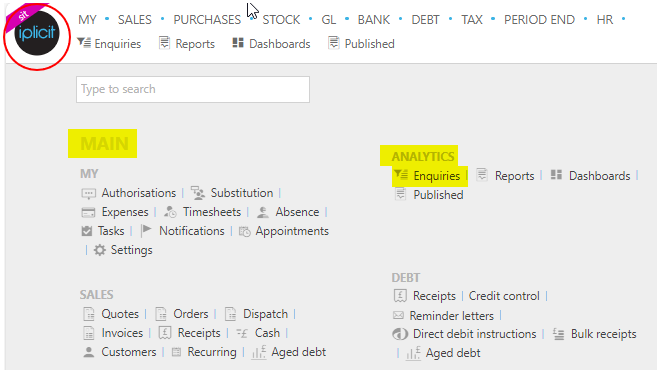
Note
This is an example screen shot of the pulse menu.
Position of the menu items within pulse will vary according to available options and dependant on personal screen resolution.
or from the Main Menu select Analytics then Enquiries -

or enter Enquiries in the Quick Launch Side Menu.

This will then show the Enquiries on the system where normal customisation of Sets can be used.

Tip
To modify the columns displayed, select  on the top right of the page, then tick/untick the information you want to hide or display.
on the top right of the page, then tick/untick the information you want to hide or display.
How do you run an Enquiry?
Run Enquiries
Select Enquiries from one of the options as shown above in View Enquiries.
Select and open one of the pre-defined Enquiries, e.g. Billing schedule.

Depending on the Enquiry selected will depend on the number of tabs that show.

Results will automatically be produced showing 'live' previews i.e. the most up-to-date data for the Enquiry.
Normal data export to Excel available via
 icon.
icon.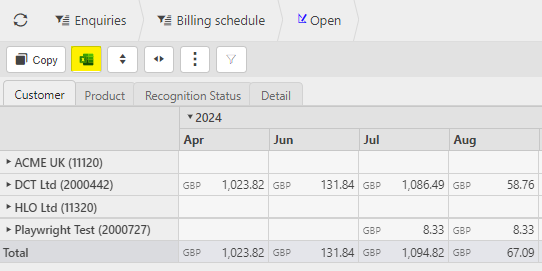
Normal expand row and columns options using
 and
and  icons.
icons.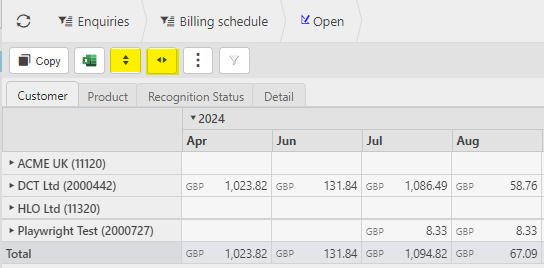
Normal filter options available using
 icon.
icon.
Although pre-defined, you have the option of adding/removing data by selecting the
 icon.
icon.Add or remove Rows. Pull row options from left hand column and drag to Rows.

If available, select the
 icon to show totals on the Enquiry.
icon to show totals on the Enquiry.Add or remove Columns. Pull column options from left hand column and drag to Columns.
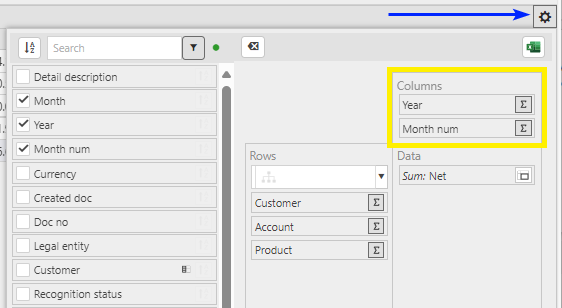
If available, select the
 icon to show totals on the Enquiry.
icon to show totals on the Enquiry.Selecting the
 with export to Excel.
with export to Excel.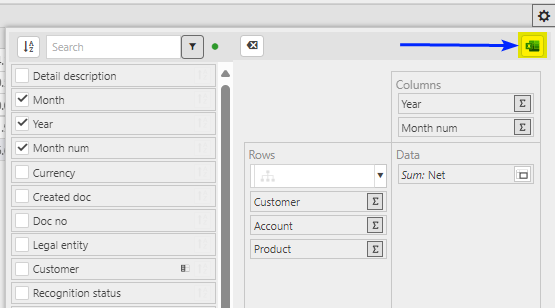
To delete all your changes, select the Reset to Default icon.
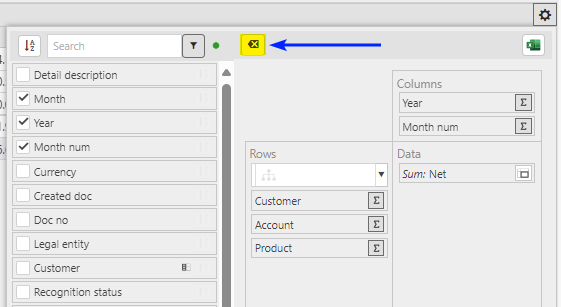
Note
Any changes made to a pre-defined Enquiry will remain unless the Set to default icon is selected.
How do you create a custom Enquiry from an existing Enquiry?
Custom Enquiry from an existing Enquiry
Select Enquiries from one of the options as shown above in View Enquiries.
Select and open one of the pre-defined Enquiries that you want to Copy, e.g. Billing schedule.
Select Copy.
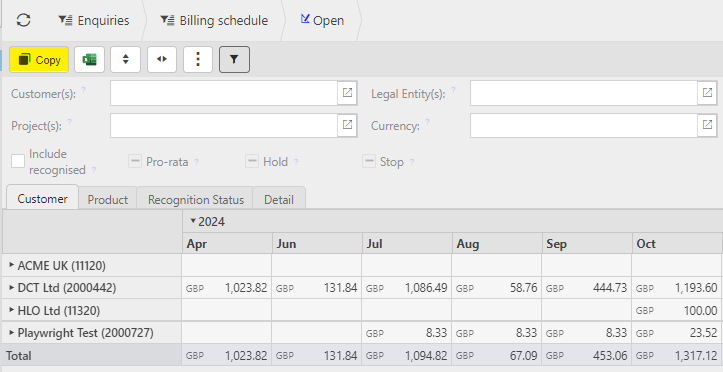
This will create a template with the same information that was on the copied Enquiry.
Enter a new valid Description.

Auto refresh: ticking this box will automatically refresh data when you open the Enquiry. Some Enquiries may take a long time to update, so unticking this option will prevent any update and will need to be done manually.
Make any changes/additions to your Enquiry.
Analytic Groups: Select the Analytic group/s.
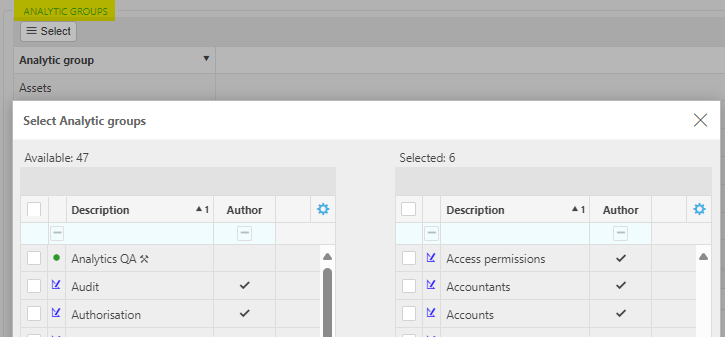
Permissions: Enter Attribute operations.
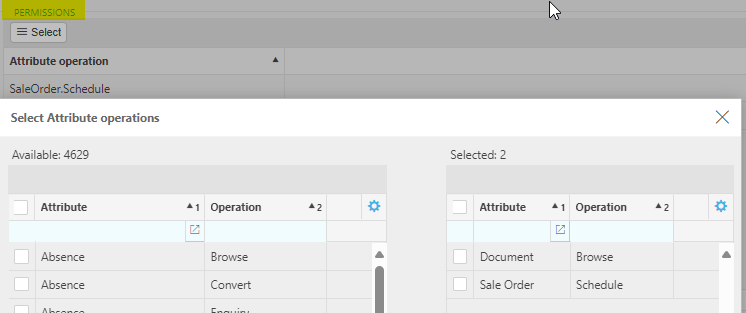
User Sharing: If left blank anybody can run the Enquiry. If User Accounts are entered, only those can see and run the Enquiry - as long as they have the correct User Permissions
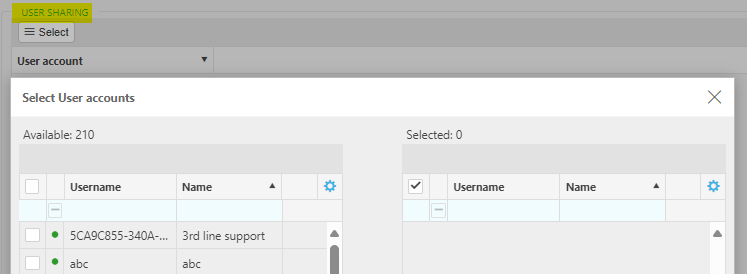
Linked Attribute: Where you want to see the Enquiry. e.g. Purchase Invoice - this will then show in the Analytics link Purchase Invoice.
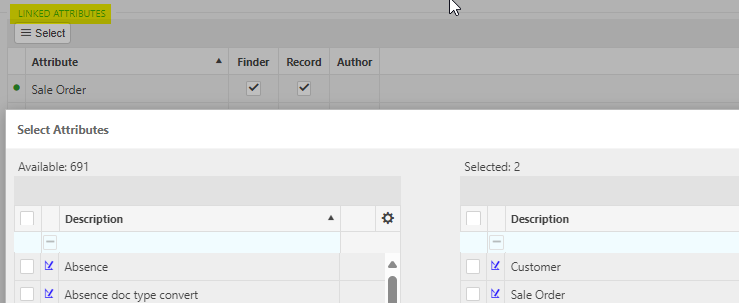
Select Create once everything has been added.
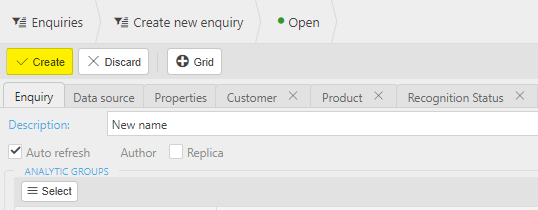
Updated October 2025